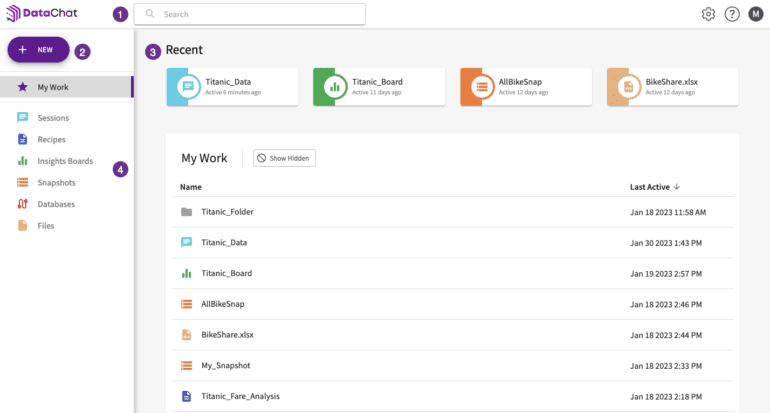TL;DR:
- DataChat introduces Ask, a new artificial intelligence tool for enhanced data analysis and insights.
- Ask utilizes large language model-based technology to understand and respond to user questions about their own data.
- The tool aims to strike a balance between AI capabilities and human intelligence, offering users the option to provide feedback and collaborate with human experts.
- Transparency, reliability, and data privacy are key considerations in the development of Ask.
- Ask provides detailed query responses, including a “recipe” outlining the steps taken by the program to reach its findings.
- Users can easily iterate on their results, replicate the analysis on different datasets, and validate the AI’s approach.
- Self-documentation offered by Ask is critical for decision validation and auditing in organizations.
- DataChat’s Ask empowers users with advanced data analytics capabilities while incorporating the advantages of AI technology.
Main AI News:
DataChat, a dynamic software startup based in Madison, has made a significant stride with the launch of its latest innovation, an artificial intelligence tool named Ask. Powered by cutting-edge large language model-based technology, this platform utilizes advanced algorithms trained on vast datasets to comprehend and respond to human language. Users of Ask can simply input their data-related queries and gain valuable insights in return, according to the company.
Drawing comparisons to the renowned ChatGPT, a widely popular generative AI tool that has sparked numerous discussions on the societal implications of artificial intelligence since its late 2022 debut, the announcement positions Ask as an alternative for data-driven inquiries. Jignesh Patel, co-founder and CEO of DataChat, emphasizes that while large language model (LLM) programs boast impressive capabilities, they cannot replace human intelligence and intuition entirely. In light of this, DataChat adopts a human-centric approach to AI in data analytics, offering users the flexibility to provide feedback, solely rely on the output, or collaborate with other human experts to refine the analytics recipe.
Acknowledging the critical role of human interaction and control in data analytics, DataChat also addresses challenges pertaining to transparency, reliability, and data privacy. Ask provides query responses accompanied by a comprehensive “recipe” that outlines the steps taken by the program to arrive at its findings. This detailed recipe can be modified, replayed, and saved, granting users the ability to iterate easily on their results, replicate the analysis across different datasets, and validate the AI’s methodology. Rogers Jeffrey Leo John, DataChat’s co-founder and the driving force behind Ask, emphasizes the significance of self-documentation in organizations, as it serves as a crucial component for decision validation and auditing.
With the introduction of Ask, DataChat propels data analytics to new heights, empowering users to extract valuable insights from their data while incorporating the advantages of AI. By striking a delicate balance between automated analysis and human expertise, Ask redefines the landscape of data analytics, ensuring transparency, accountability, and the efficient utilization of AI capabilities.
Conlcusion:
The introduction of DataChat’s Ask AI tool represents a significant advancement in the market for data analytics. By leveraging large language model-based technology and striking a balance between AI capabilities and human expertise, Ask offers users enhanced data analysis and insights. The tool’s emphasis on transparency, collaboration, and self-documentation addresses key challenges in the industry.
This innovation not only empowers organizations with efficient and reliable data analytics capabilities but also sets a new standard for incorporating AI technology responsibly. As the market continues to evolve, DataChat’s Ask establishes itself as a valuable asset for businesses seeking to extract meaningful insights from their data while ensuring accountability and accuracy in their decision-making processes.

